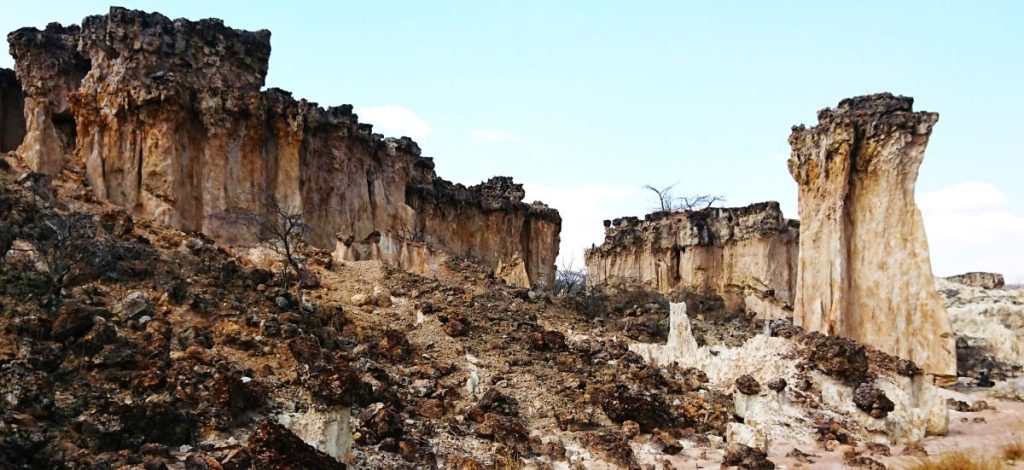
The rather astounding site in the wilderness was first discovered by a team of conservators in their mission to conduct aerial patrol of the vast Ruaha National Park in Southern Tanzania.
Viewing the site from the sky, the area looks like New York City perched in the jungle, but up close the newly discovered ‘Ruaha Magic Site,’ resembles an ancient town buried underground for thousands of centuries.
Some observers feel it could even be regarded as ‘Magic City,’ Could it be a lost city of an ancient civilization concealed below the earth surface for a million years, before erosion brought it back to the light?
Jungle Hook
Set deep in the jungle, in an area known as Magida, located some 70 kilometers from the Ruaha National Park’s Headquarters, the astounding place is made up of high rising boulders that look like ancient buildings towering several storeys high.
There are also a number of sky-scrapping tapered monolithic rock pillars looking like obelisks formerly found in old Roman and Greek cities.
“This is a new discovery, which must attract geologists, archaeologists and historians,” stated the Tanzania National Parks (TANAPA) Senior Assistant Commissioner of Conservation, Godwell Meng’atak who is also the commander of Ruaha.
According to SACC Meng’atak, the strange and virgin site was discovered in the southern parts of Ruaha during an aerial patrol of the park, using a helicopter, an expedition which was led by the commissioner himself.
“You are probably the first civilian human beings to set foot in this area,” Commissioner Meng’atak told the journalists who visited the new location in Iringa Region.
The concept name so far is ‘Ruaha Magic Site,’ with the area featuring many giant structures complete with naturally formed passage streets crisscrossing between them.
There are narrow alleys like Zanzibar’s stone town, unexplored caves and what looked like underground tunnels. In short this is what an ancient city built by ‘gods,’ would look in any mythical legend.

The site is sandwiched between hills dotted with colourful trees and shrubs.
It also features high rock towers and giant rocks; while the ground has multi-coloured soil texture, ranging from black, ashy, red and brown.
Plus it is very hot in the area, there are some pesky flies too, they insects try to get into eyes, ears and noses.
Rock of ages
But there is also evidence that ancient people could have lived in the area, because a couple of Neolithic tools, including stone grinders, have also been found at some locations of the site.
“I am sure there is more to be discovered once archaeologists set foot here,” the conservator pointed out.
Likely to be a paradise for researchers, archaeologists and geologists, the Ruaha Magical Site, is already on fast track to become Tanzania’s newest tourist attraction.
“We are working hard to ensure a proper road is built to connect the site with entry points and other sides of the Ruaha,” the National Park Commander Meng’atak explained.
How big is the site?
This is yet to be known.
How high are the structures?
This is also begs extensive research.
How attractive?
From the first sight, the ancient Magida city in the jungle feels like a huge film set in the wilderness.
Wild Dreams
Ruaha is the second biggest National Park in Tanzania, mapped within 20,000 square kilometers, with more than 70 percent of its area yet to be fully explored.
The Park is home to 15,000 giant elephants, over 20,000 buffaloes, 575 bird species, 300 ostriches, 15 species of reptiles, including oversized crocodiles and snakes as well as monitor lizards.

The greater Ruaha landscape boasts over ten percent of the world’s lion population, ranking second after the Nyerere-Selous.
Ruaha is one of only six lion populations left in the world that still has over 1000 lions.
Other cats include the elusive cheetah and leopards.
And now the marvellous geological site has just cropped up in the conservancy to add another spellbinding effect to the area’s tourism package.




Comments are closed, but trackbacks and pingbacks are open.